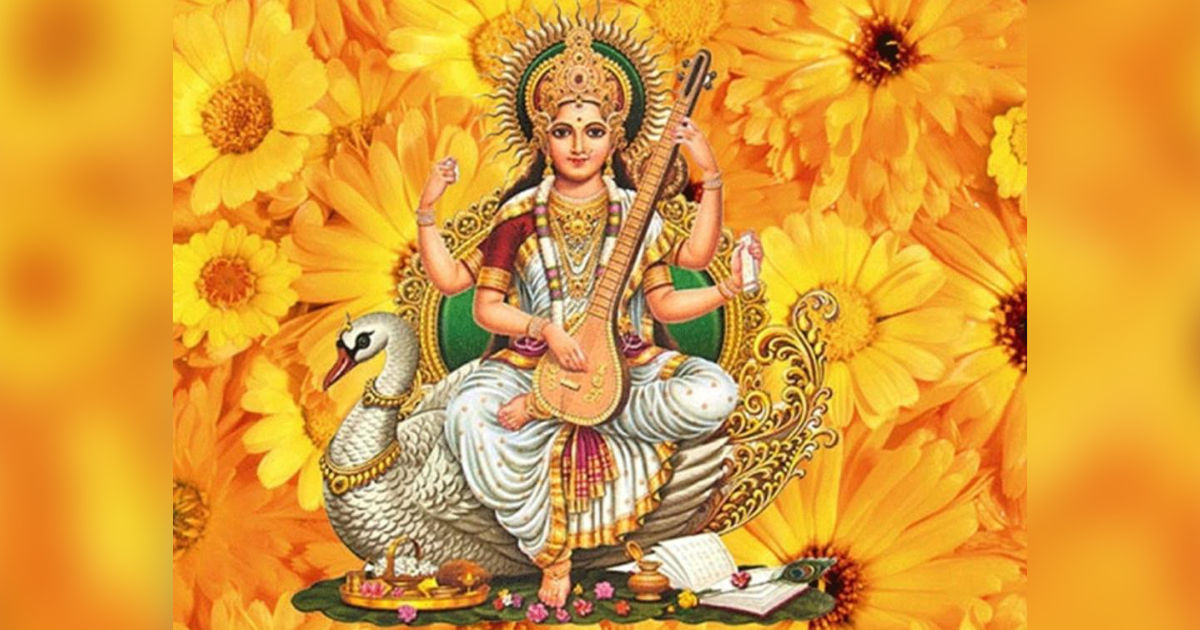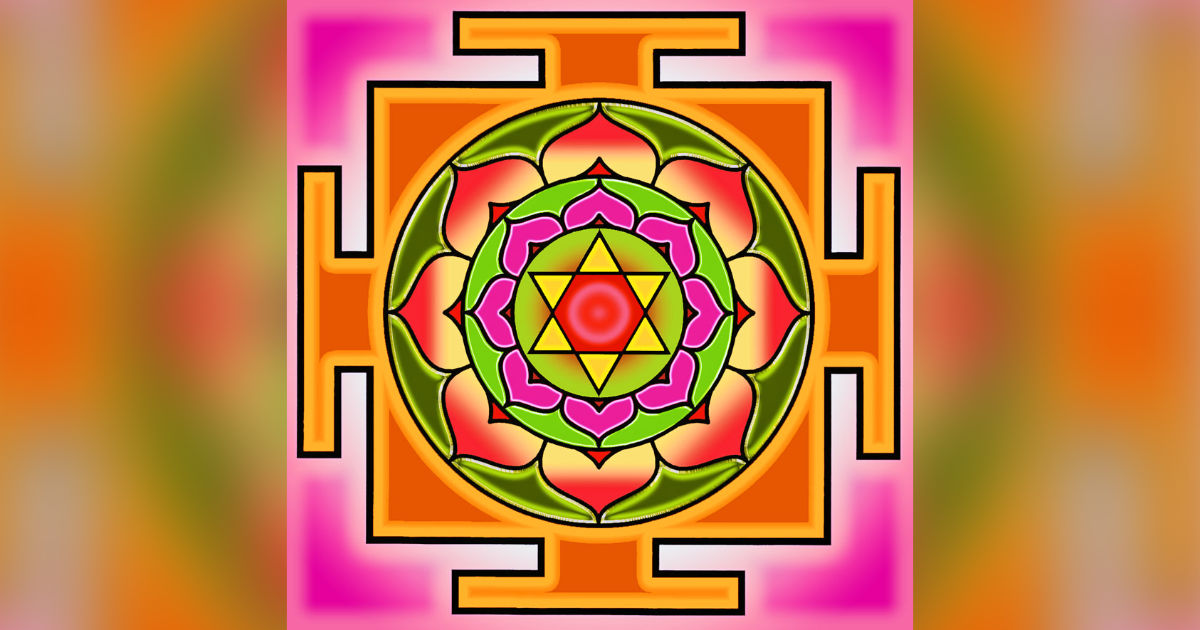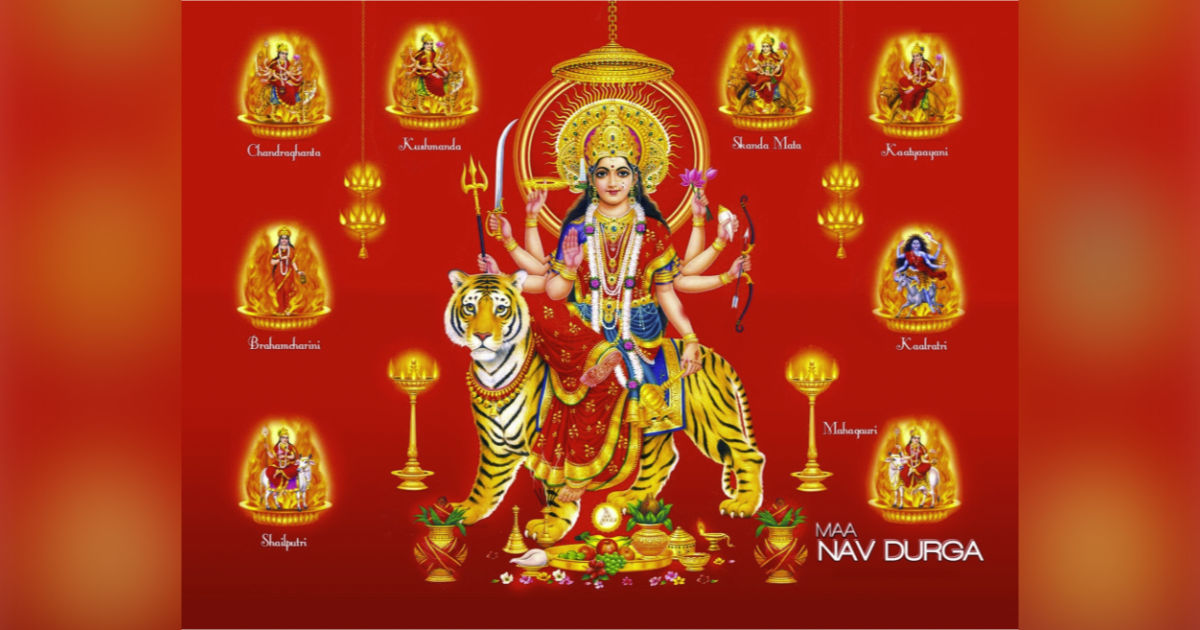Chaitra Navaratri – 9th April till 17th April – is considered an auspicious time for spiritual renewal, cleansing and seeking the blessings of the divine. It symbolizes the victory of light over darkness. It is devoted to goddess Durga, whose nine forms are worshipped on nine days. The nine-day celebration observes Goddess Durga’s universe birth and all living things inside it. It is believed that Durga Ma visits her devotees during this period. Continue reading
Tag Archives: devotees
834 – Saraswati Puja
Saraswati is the Goddess of knowledge, fine arts and education. Before Saraswati Puja starts, students keep their books and instruments in front of her for blessings. They are not supposed to touch their books as they are kept at the altar. As children, we loved this idea as we would not be able to do our homework. It is believed that if one prays to her with dedication and devotion, one will be blessed with academic success. Also, one becomes Sattvic and all tamasic habits are shed. Continue reading
777 – Forgive me
Sivaparadha Kshamapana Strotram means seeking forgiveness. It was composed by Adi Shankaracharya. It is recited for forgiveness in the worship of Shiva. Devotees beg for forgiveness for the sins that they committed with their senses. Continue reading
Krishna’s Birthday Celebrations
Janmashtami, is the birthday of Krishna. It is celebrated with fasting until midnight and then one breaks one’s fast. It is a 24 hour fast with no water. A Jhanki is made, which is like the Christmas Creche. Then at midnight, prayers are offered and 56 dishes are offered to Krishna. Continue reading
664 – Speak with Love
So that it remains etched in Ether.
The ancient rishis in India believed that the divine aphorisms of the Vedas once uttered remained forever in the Aakash. Ether is the medium through which we can communicate with Gods using sound vibrations caused by the chanting of mantras and sacred syllables. Continue reading
379 – Nine forms of the Goddess worshipped during Navratri
- Shailputri is the daughter of the Himalayas. She is also worshipped as Parvati. Day one is dedicated to her. The offering is pure ghee offered on her foot. The prasad blesses the devotee with a life free of disease.
- Brahmacharini is a lover of simple food. Day two is dedicated to her. Devotees offers her a bhog (pudding) of sugar and fruits. She increases the longevity of the family members.
- Chandraghanta rides a lion and is believed to destroy all evil and wickedity. Day three is dedicated to her. She wears the half-moon on her head. She is pleased with an offering of milk (e.g., plant based), sweets and kheer.
- Kushmanda produced the cosmic egg with her smile, when the universe was plunged in darkness. Day four is dedicated to her. She is offered sweet fried bread (malpua) in syrup, and one fasts before the evening prayer.
- Skandamata is seated on a lotus, and she also has a lion as her ride. Day five is dedicated to her. She is offered bananas and she keeps her devotees in good health.
- Katyani is the daughter of the sage Katyana. Day six is dedicated to her. She is offered honey. Her blessings make the devotees free of bitterness.
- Kaalratri protects her disciples from evil powers and spirits. Day seven is dedicated to her. She is offered sweets made from jaggery.
- Mahagauri is offered coconut as prasad. Day eight is dedicated to her. It is also believed that if one offers coconuts to the Brahmins, then one will be blessed with a child.
- Siddhayatri protects the devotee’s family from any mishaps. Day nine is dedicated to her. She is offered sesame seeds and one fasts before the prayers.
The purification process
When we worship the goddess in her different avatars for nine days, we ourselves are going through a purification process. Also observe that none of the offerings are extravagant, they are simple foods, which most people can offer. The Goddess takes care of us as long we remain sincere in our devotion.
Aim Hrim Klim
Credits: hinduismnow.org
James Swartz – Conciousness and matter – Talk 10
Swami Chinmayananda. Consciousness and matter. Four types
of devotees: Devoted to god because of suffering. Spiritual
materialism principle and Vedanta. Seeker of god or truth. Nondual
devotee. The lower and the higher self. Krishna, Arjuna and
the cosmic vision. Until you see the beauty in the ugliness you
are not free. Understand what is imperfect is perfect. You are
perfect.
More: Vedanta Seminars.
More on: Vedanta.
Learn more about: Yoga Vidya.
You can sign up for: our online seminars.
You can also support us by: donating.
Podcast: Play in new window | Download
Subscribe: RSS
Intuition of Reality – Vedanta Talk 6 by Ira Schepetin
 Prakriti and Gunas. Bhagavad Gita Chapter 7. Types of Devotees. Karma Yoga. Stages of Karma Yoga. Chapter 12, 8-20 Bhagavad Gita.
Prakriti and Gunas. Bhagavad Gita Chapter 7. Types of Devotees. Karma Yoga. Stages of Karma Yoga. Chapter 12, 8-20 Bhagavad Gita.
More Vedanta Seminars you will find here.
More on Vedanta you will find here.
English Community, Blog, Seminars you will find here.
Podcast: Play in new window | Download
Subscribe: RSS







